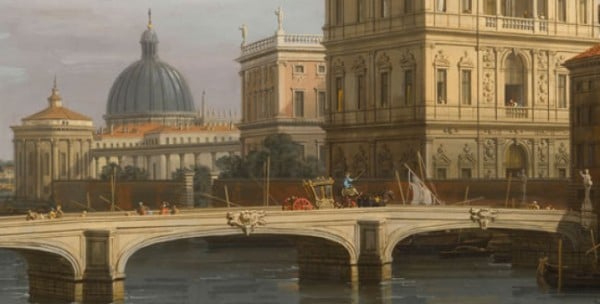
One year to the day after Cyprus came within a hair’s breadth from financial collapse, the island-nation’s capital city, Nicosia, will inaugurate its first-ever museum dedicated to European, Greek, and Cypriot art. The A.G. Leventis Gallery opens its doors on March 22nd, fulfilling a long held dream of its namesake, late Cypriot business magnate Anastasios G. Leventis. The name will already be familiar to frequenters of antiquities departments at London’s British Museum or New York’s Met, which each have galleries named in honor of Leventis’ foundation. However, this latest effort eschews artifacts in exchange for the visual and decorative arts.
The project is estimated to have cost €20 million (US$27.4 million) to complete and centers on Leventis’ collection of over 800 paintings, drawings, watercolors, and objets d’art. Along with a restaurant and a set of 10 apartments, the collection will be held in a 4,500 sq. meter (48,438 sq. ft.) building designed by London- and Bath-based architectural firm, Feilden Clegg Bradley Studios. The development cost alone makes it the largest project constructed in the capital in recent years, according to Cyprus Mail.
Their ambitions are equally lofty. “Our aim is to provide Cyprus with a cultural institution that will promote European art, bringing the public in contact, for the first time, with major works created within the span of four centuries, from the Renaissance to the 20th century,” writes A.G. Leventis Gallery director, Loukia L. Hadjigraviel in a statement to artnet News. She goes on to emphasize the institution’s educational role, noting that they have been working extensively with government agencies to place the museum within elementary and middle school curricula across the country and to utilize its collections in university education as well.
Hadjigraviel insists that despite a still-fraught political climate surrounding Cyprus’s divided status since the 1974, the museum remains an apolitical locale in which she hopes to create, “an opportunity for young people in particular to come together in a place of culture.” Due to its status as a private collection developed along art historical lines and over many years (and largely before the Turkish invasion in 1974) one shouldn’t split hairs. However, it is also not difficult to imagine that—due to the museum’s prominence and the repeated calls for greater unification between the nation’s north and south (i.e. ethnically Turkish and Greek inhabitants) from Cypriot President Nicos Anastasiades—some may view the collections’ composition as divisive.
Regardless of initial public perception, the museum is set to offer the country a wealth of European old masters and works from the classical modern unparalleled in their domestic landscape. El Greco’s St. Francis in Ecstasy (1585-90), Canaletto’s The Piazzetta, Venice with the Campanile under repair (c. 1746-1755), Chagall’s Les Fiancés au bouquet (Engaged couple with flowers) (1954-63), and Monet’s La Seine à Jeufosse près de Vernon (The Seine at Jeufosse near Vernon) (1884) are but a small selection of highlights from the pieces curated by Mytro Hatzaki for the museum’s section of European art. Works by Konstantinos Volanakis and Konstantinos Parthenis anchor the Evita Arapoglou-curated Greek collection, while Ionnis Kissonergis paintings and Adamantios Diamantis’ monumental World of Cyprus represent the so-called Cyprus School of Painting.
Cyprus is already outperforming expectations for recovery—the economy, while still not out of the woods, only contracted by 6% last year, 2 points less than was expected. And, according to finance minister Harris Georgiades, much of that improvement is owed to tourism, which grew 9% in 2013. The museum’s foreign-dollar-drawing combination of continental and local should help along that road. However, the arguably more important battle for the museum is one of maintaining upbeat morale at home. To that end Hadjigraviel is hopeful, intending her institution to be, “an important cultural outlet,” despite hard times, and “a source of optimism for the future.”